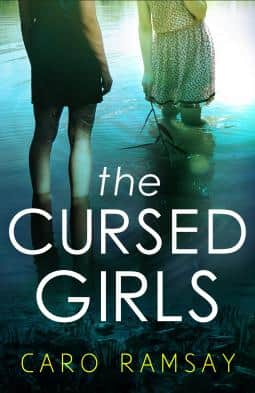Book review: The Cursed Girls, by Caro Ramsay


There is a strange form of literary evolution. In the late 18th century, Ann Radcliffe received astonishing advances for her “romances”, which we now think of as “the gothic”. Lonely homes, women in peril, something spooky that might be explicable: the tropes were set down early. Although the genre laid low in the 19th century, it came back with novels like Daphne DuMaurier’s Rebecca. It has enjoyed a modern resurgence in works by, for example, Ruth Rendell writing as Barbara Vine and the genuinely disturbing novels of Sophie Hannah. In essence, the gothic turned into the psychological thriller.
This standalone novel by Caro Ramsay is very much in that tradition. The central character is Megan Melvick, who has returned to their draughty, aristocratic pile because her sister is dying. From the first pages we know that the Melvicks have a history of suicide and mental illness. Moreover, Megan is wondering if her mother, who left unexpectedly, will come home to “say a final goodbye”. Megan does not have her problems to seek. She is deaf, she has been diagnosed with dissociative identity disorder and selective amnesia, and has slept with her sister’s estranged husband on their wedding day. This was the wedding at which there was also a hideous accident, resulting in a death. Although we begin with Megan – incidentally, I thought the name Melvick strange, but discovered there is a Melvick Place in Govan, so cute joke – we are then introduced to her best friend, Carla, whose narrative is given in disconcerting italics. Part of the novel’s structure, and gothic nature, is to keep the reader reading by leaving it ambiguous if Carla is a quiet stalker, a ghost or something else entirely. The melange does not really gel. This is the kind of book that you keep reading just to finish the puzzle. It seems wholly appropriate that part of the novel’s imagery is of a mosaic which has to be put back together.
Advertisement
Hide AdThe friendship between the entitled Megan, who is slighted because her sister is so much more glamorous, and the deprived, abused, in-your-face Carla is the novel’s highpoint. In a sense, it would have been a far better novel if it had just concentrated on that dynamic. In a novel full of eminently dislikeable individuals, Megan and Carla come across as damaged but essentially decent. The descriptions of Megan’s deafness are also done well. “I had no need for noise and nonsense”, she says, and the novel cleverly depicts how people can speak in front of the deaf as if they were not there, and are unwise to think lip-reading does not exist.


As I have said before, novels tend to have their Freudian slips. In this, the most egregious is a reference to Midsomer Murders and Cluedo. But it is not the only one. Megan’s lost mother was a horse breeder, and the fillies and stallions are named Poirot, Marple and so forth. Just to make sure the reader gets the point, a family ancestor is called Agatha and the penultimate scene involves all the suspects in a drawing room. It is slightly try hard, to say the least. Christie was extremely good at the tiny observations that reveals everything, but here the novel shouts its clues. Rich people are unaware. Poor people are devious. The title’s “cursed girls” refers both to awful toffs and beleaguered scruffs.
It is difficult reviewing anything crime related, as it would be ungracious to give away significant plot details. But I think, given the reference to a popular TV series, it is acceptable to say I figured out who the villain was about a third of the way through the book, using my tried and tested Midsomer algorithm. If you ignore all the mis-directions and choose the least likely person, you shall be correct. The novel also suffers from that bane of Scottish books, the double. Carla and Megan begin to dress like each other and are both bridesmaids. Megan may have multiple personalities. Again, it is slightly de trop to have so many stereotypical themes.
In terms of the prose style, there is a staccato quality that involves not using verbs and breaking lines. A typical example is “Like I was going to forget. Money, just money, hanging on the walls. Just pictures. Daubs of coloured pigment stuck on canvas”. It seems to be attempting to give a sense of breathless urgency when the plot is already hectic. There is also my howler of the year in terms of books being written and published hastily. I am fairly certain that feet have soles, not souls. Unless that is another nod at the Caledonian Antisyzygy.
In many ways this is not a bad book; it is just not a particularly good one. The characters feel like characters rather than humans and the plot stuffs in far too much – anorexia, abuse, poverty, adultery, golden eagles, rooks and their sinister imagery, faerie ponds and more. Less is sometimes much more. It is never a twist when only a few pages in the reader thinks, “Well, what is the twist going to be?”
The Cursed Girls, by Caro Ramsay, Black Thorn, £8.99
A message from the Editor:
Thank you for reading this article. We're more reliant on your support than ever as the shift in consumer habits brought about by coronavirus impacts our advertisers.
If you haven't already, please consider supporting our trusted, fact-checked journalism by taking out a digital subscription at https://www.scotsman.com/subscriptions